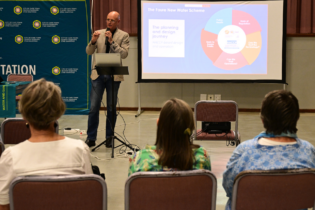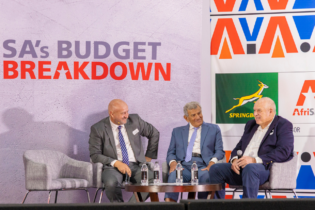The 55c a litre cut in the petrol price from Wednesday is a lost opportunity by the government to resolve the impasse around paying for the upgrading of Gauteng freeways, according to Econometrix.
The authorities could have reduced the petrol price by a smaller 44c a litre and put 11c a litre into the fuel levy, applying these additional funds to cover the debt servicing costs incurred by the SA National Roads Agency Limited (Sanral) for the Gauteng Freeway Improvement Project (GFIP), the consultancy said on Friday. However, Econometrix stressed that this ran counter to the government’s stated philosophy that the user should pay for infrastructure. Econometrix said raising the fuel levy and ring-fencing it specifically for SANRAL “would have been a much more practical solution” than electronic tolling on the freeways, based on the high cost of collection and enforcement of such tolls relative to the revenue collected. The Opposition to Urban Tolling Alliance meanwhile warned on Friday that the civil disobedience that would arise if e-tolling was introduced would damage South Africa’s credit and investor ratings. Last month Moody’s Investors Service downgraded SANRAL’s credit rating, which will increase its borrowing costs. This followed the temporary high court interdict that the alliance obtained in April to prevent the implementation of e-tolling. The government has applied to the Constitutional Court to appeal the interdict. The alliance expressed the hope that a suitable funding option for the GFIP and national roads could be identified before more money was spent on the matter in court. It said it found last week’s wide-ranging remarks on e-tolling by Deputy President Kgalema Motlanthe interesting on several fronts, particularly indications based on estimates from Moody’s that Sanral could be losing between R270 million and R500m a month.“One would have thought Sanral itself could have given more detail about the nature and extent of its monthly commitments without the government relying on estimates from a rating agency.
“Indeed, much greater transparency about GFIP costs and operating model, along with funding obligations and the effect on Sanral’s debt of the R5.8 billion transfer by the Treasury earlier this year, might well give more confidence to both road users and rating agencies,” it said. Motlanthe’s remarks were also a lost opportunity for the government to clarify the definition of the user-pays principle and how and where it would be applied. It said water, electricity and telephones were examples where the principle was applied nationally and consistently, unlike the proposed e-tolling of GFIP, which was applied to 185 km of roads while many of the provincial roads upgraded by the three-year, R23 billion S’hamba Sonke programme remained untolled. The alliance said the cabinet’s statement – that it had looked at alternative payment models but had found e-tolling was the best – conflicted with the economic analysis report of the GFIP prepared in 2010 for Sanral by the Graduate School of Business of UCT.
There was also “a concerning disconnect” between the cabinet’s view of safe, reliable and accessible public transport and alternate roads in Gauteng and the reality on the ground.
Source: iol
The alliance said the cabinet’s statement – that it had looked at alternative payment models but had found e-tolling was the best – conflicted with the economic analysis report of the GFIP prepared in 2010 for Sanral by the Graduate School of Business of UCT.
There was also “a concerning disconnect” between the cabinet’s view of safe, reliable and accessible public transport and alternate roads in Gauteng and the reality on the ground.
Source: iol







